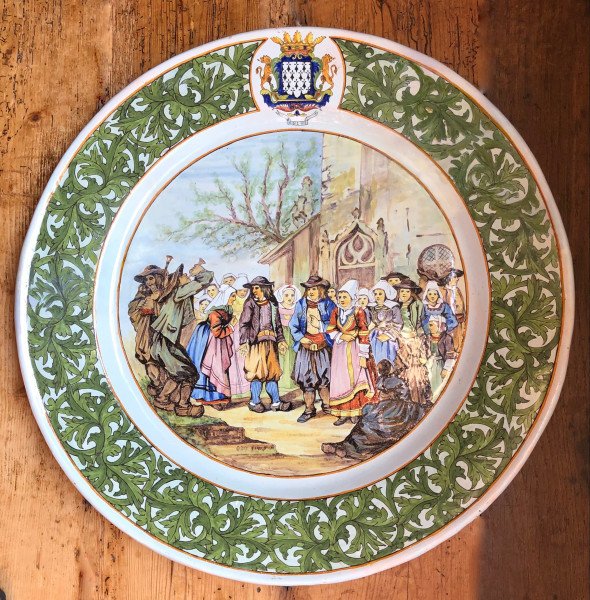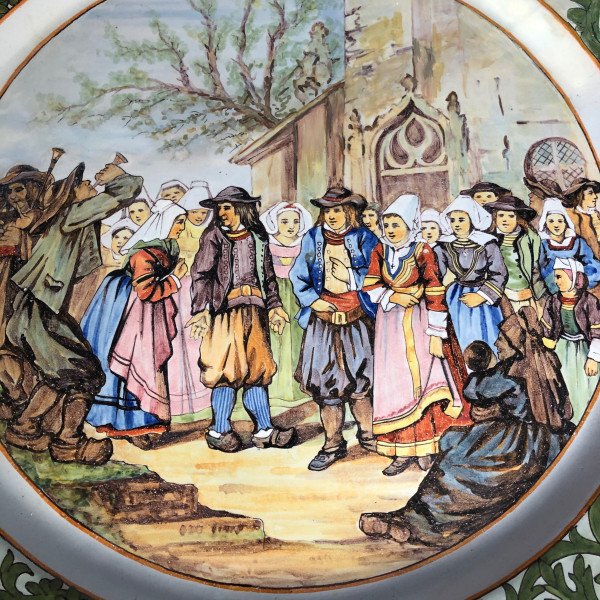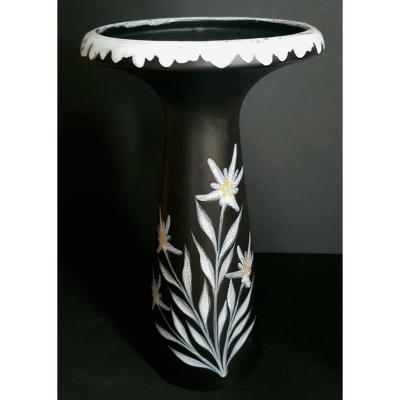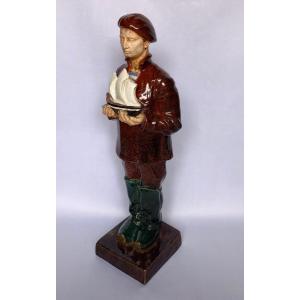Alfred Beau (1829-1907) trained in drawing and watercolor by his older brother Léopold, he followed drawing lessons from Prosper Saint-Germain based in Morlaix. Alfred Beau first established himself as a photographer. He also claims to have been taught by the painter Camille Flers and Eugène Isabey. In April 1857, he married Adah-Ana Souvestre, last daughter of the Morlaisian writer, Émile Souvestre. Adah is also a watercolor painter and also creates earthenware which she exhibits twice at the Salon des Beaux-Arts. Undoubtedly influenced by the painter and ceramist Michel Bouquet and by the renewed interest in ceramics during the Second Empire, he became a painter of paintings on earthenware and exhibited decorative dishes and trays of various inspirations. After 1870, after having offered his services to the Quimper earthenware factory HB which refused to hire him, because Alfred Beau demanded to sign his pieces, he ended up being taken on by Arthur Porquier's widow as artistic director of the Porquier earthenware factory in Quimper. . He then took over the management and the earthenware factory would later take the name Porquier-Beau. Alfred Beau then created numerous models: picturesque genre scenes, scenes of fairs and markets, representations of traditional trades, pardons, weddings and celebrations, botanical decorations inspired by Japanese prints... He pushed the illusionism to the point of creating, among other things, earthenware musical instruments. He presented his creations at Parisian salons and at universal exhibitions, in particular at the Universal Exhibition of 1878 where he obtained a silver medal for his earthenware cello. Alfred Beau was the architect of the revival of ceramics in Quimper; it was quickly imitated by other Quimper earthenware factories. In 1880, he was appointed curator of the Museum of Fine Arts in Quimper. Friend of Alfred Guillou and Théophile Deyrolle, he endeavored to put together a Breton-inspired collection, notably creating in 1885 a diorama illustrating a Breton wedding party leaving a chapel made up of 44 mannequins.

































 Le Magazine de PROANTIC
Le Magazine de PROANTIC TRÉSORS Magazine
TRÉSORS Magazine Rivista Artiquariato
Rivista Artiquariato